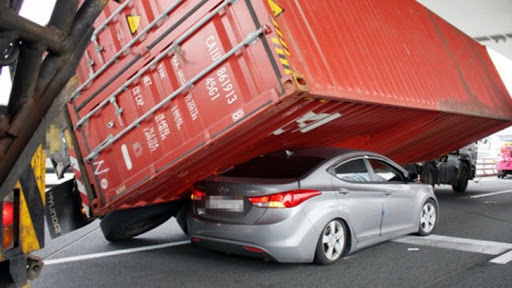Abbotsford/Victoria – The Criminal Justice Branch (CJB), Ministry of Justice, announced Wednesday that no charge has been approved in relation to a fatal motor vehicle accident involving an off duty member of the Abbotsford Police Department on December 26, 2014. A 14 year old youth tragically died after being struck by the officer’s personal vehicle as he was driving home. The incident was investigated by the Independent Investigations Office (IIO), which subsequently submitted a Report to Crown Counsel to CJB.
Following an investigation, where the Chief Civilian Director of the IIO determines that an officer may have committed an offence, the IIO submits a report to CJB. The Chief Civilian Director does not make a recommendation on whether charges should be approved.
In this case CJB has concluded that the available evidence is not capable of proving any careless driving offences under the British Columbia Motor Vehicle Act. A Clear Statement explaining this decision in greater detail is attached to this Media Statement.
In order to maintain confidence in the integrity of the criminal justice system, a Clear Statement explaining the reasons for not approving charges is made public by CJB in cases where the IIO has investigated the conduct of police officers and forwarded a report to CJB for charge assessment.
Summary of Decision
On December 26, 2014 at 6:15 p.m. an off duty member of the Abbotsford Police Department was driving home in his personal vehicle. He travelled south on Bourquin Crescent and proceeded through a green light at the intersection of Mill Lake Road. At the same time, a 14 year old male was riding a longboard/skateboard westbound on Mill Lake Road. The youth entered the intersection on a red light and was struck by the officer’s vehicle, suffering fatal injuries.
The matter was investigated by the Independent Investigations Office. The Acting Chief Civilian Director subsequently submitted a Report to Crown Counsel to CJB for consideration.
After a careful review of the matter, the CJB has concluded that the available evidence is not capable of proving any careless driving offence under the British Columbia Motor Vehicle Act. In particular, notwithstanding evidence that the officer’s vehicle was travelling above the speed limit prior to the collision, the Crown has concluded that it would not be possible to prove that the officer’s driving was a departure from the standard of a reasonably prudent driver in the circumstances. The evidence available is not sufficient to support a conviction for any of the three offences which comprise careless driving under section 144(1) the Motor Vehicle Act.
The charge assessment was conducted by a senior prosecutor in another area of the province, with no prior or current connection with the officer subject to investigation.
Charge Assessment and the Standard of Proof
The Charge Assessment Guidelines applied by the CJB in reviewing all Reports to Crown Counsel are established in Branch policy and are available online at:
http://www.ag.gov.bc.ca/prosecution-service/policy-man/pdf/CHA1_ChargeAssessmentGuidelines.pdf
In making a charge assessment, Crown Counsel must review the evidence gathered by investigators in light of the legal elements of any offence that may have been committed. Crown Counsel must also remain aware of the presumption of innocence, the prosecution’s burden of proof beyond a reasonable doubt and the fact that under Canadian law, a reasonable doubt can arise from the evidence, the absence of evidence, inconsistencies in the evidence, or the credibility or reliability of one or more of the witnesses. The person accused of an offence does not have to prove that he or she did not commit the offence. Rather, the Crown bears the burden of proof from beginning to end.
Relevant Law
Crown Counsel’s review of this matter focussed on Section 144(1) of the Motor Vehicle Act, which provides:
A person must not drive a motor vehicle on a highway
(a) without due care and attention,
(b) without reasonable consideration for other persons using the highway, or
(c) at a speed that is excessive relative to the road, traffic, visibility or weather conditions.
This section creates three separate offences, each of which contains a prohibition against a form of careless driving. It is important to note that causing an accident or injury are not elements of the above offences. Whether or not an accident has occurred is not a determinative factor. Rather it is the manner of driving which must be considered.
Prior court decisions have held that careless driving offences under the Motor Vehicle Act require that the Crown prove that the manner of driving, viewed objectively in all the surrounding circumstances, departs from the accustomed sober behaviour of a reasonably prudent driver and posed a potential danger to others on the roadway. The courts have held that drivers are not required to satisfy a standard of perfection but rather that their driving be reasonably prudent in all the circumstances.
The Circumstances of the Incident
Bourquin Crescent is a four lane road in Abbotsford which generally runs north-south, with two southbound and two northbound lanes. Mill Lake road is a two lane road which runs east-west and intersects Bourquin. The intersection is controlled by traffic and pedestrian walk lights. There is no posted speed limit in the area where the collision occurred. The un-posted speed limit, therefore, is 50 km/hr.
The evidence collected in this case, including surveillance video from various cameras on Bourquin Crescent; physical evidence from the vehicle and scene; scientific calculations of the collision reconstruction analysts; witness statements from persons travelling in vehicles near the scene and pedestrians near the point of impact; and cell phone records of the deceased provide an account of the incident which can be summarized as follows.
On December 26, 2014 at 6:15 pm the road surfaces were wet but it was not raining. It was past sunset and dark except for the artificial lighting in the area. Traffic was light and the off duty officer was traveling south on Bourquin Crescent in the curb lane. From surveillance videos with time stamps, a collision reconstruction analyst calculated his average speed at 64.6 km/hr in the block preceding the intersection. The analyst was unable to say what speed the officer was travelling at the moment of the collision.
The occupants in the vehicle following in the centre lane described the officer’s speed as consistent with theirs. As his vehicle approached the intersection of Mill Lake Road the light had been green for traffic on Bourquin for 1 minute and 58 seconds and remained green for 24 seconds after the collision.
The youth involved was wearing dark clothing, with no reflective material or helmet. The evidence indicates that he was riding a longboard/skateboard westbound on Mill Lake Road and talking on a cell phone. He entered the intersection on a red walk light, riding in the crosswalk on the north side of the intersection. The collision reconstruction analyst calculated his speed at 10.32 km/hr.
The youth had travelled across three lanes of travel on Bourquin and was partway through the southbound curb lane when he was struck by the officer’s vehicle. The off duty officer told the first police responding to the collision scene that he had not seen the youth before the collision
The officer attempted to brake at the last moment but it was too late, and the youth was struck by the front of the vehicle on the passenger side, hitting the windshield and pillar with his upper body. He was thrown some distance by the force of the collision, and died in hospital several hours later as a result of the injuries suffered.
The occupants in the vehicle following the officer described the skateboarder as moving very fast and being “very hard to see”. The collision reconstruction analyst’s report also notes that the night time conditions and low contrast clothing worn would have made identification of the skateboarder difficult.
Analysis
Careless driving offences under the Motor Vehicle Act require that the Crown prove the accused’s driving departed from the accustomed manner of driving and posed a potential danger to other persons. The accused is judged by the standard of a reasonably prudent driver.
On the available evidence, the off duty officer drove in a controlled manner southbound on Bourquin Crescent, apart from the evidence that his vehicle averaged 14.6 km/hr above the speed limit in the block preceding the collision.
Crown Counsel has concluded that it would not be possible to prove to the necessary standard that the manner in which the officer drove his vehicle, and in particular the speed at which he was travelling, departed from the accustomed manner of driving or posed a potential danger to other persons. A driver is not judged by a standard of perfection but reasonable prudence.
Driving is a complex task and the legal standard accepts errors in judgment and performance.
On the available evidence, although above the legal speed limit, the vehicle speed was at pace with the flow of traffic in the area at the time and not unusual for a major roadway at that time of day. The evidence does not establish that the speed was excessive, or that in and of itself it posed a potential danger to others on the roadway. Nor does the evidence establish that the officer could reasonably have anticipated the actions of the skateboarder in crossing rapidly in front of him, against a red light. The Branch has concluded that the evidence does not provide a sufficient basis for conviction for any of the three offences which comprise careless driving under section 144(1) the Motor Vehicle Act. As a result no charge has been approved against the officer involved in the incident.
Material Reviewed
The charge assessment in this matter included consideration of the following materials:
Report to Crown Counsel Executive Summary and Detailed Narrative.
Summaries, recordings and transcripts of statements from the civilian witnesses and the officers who attended the scene.
Police officers’ notes, will says and collision reports.
Collision Reconstruction Report.
Photographs, surveillance videos and scene ‘drive through’ videos.
Vehicle examination and inspections report.
Cell phone records.






